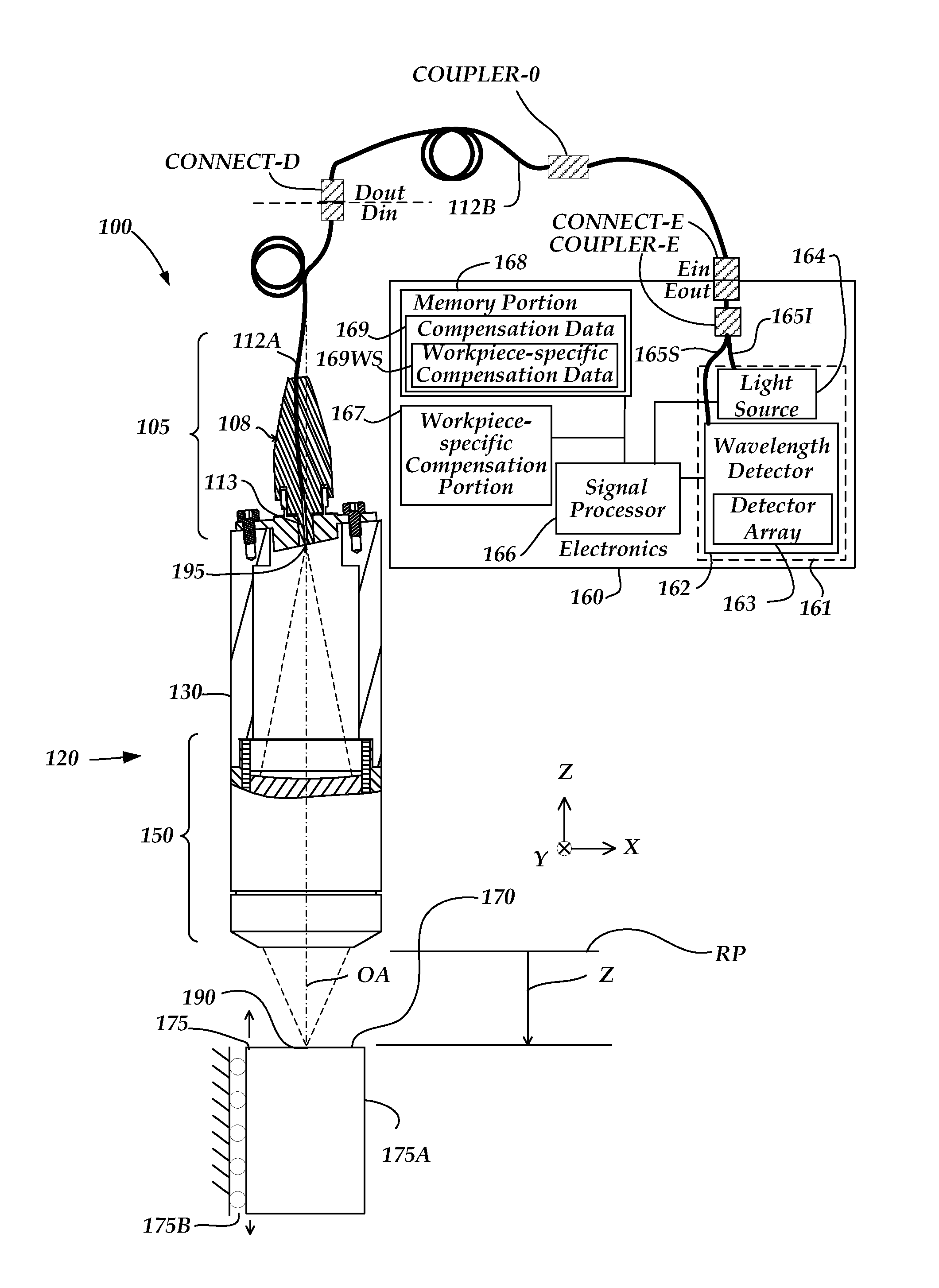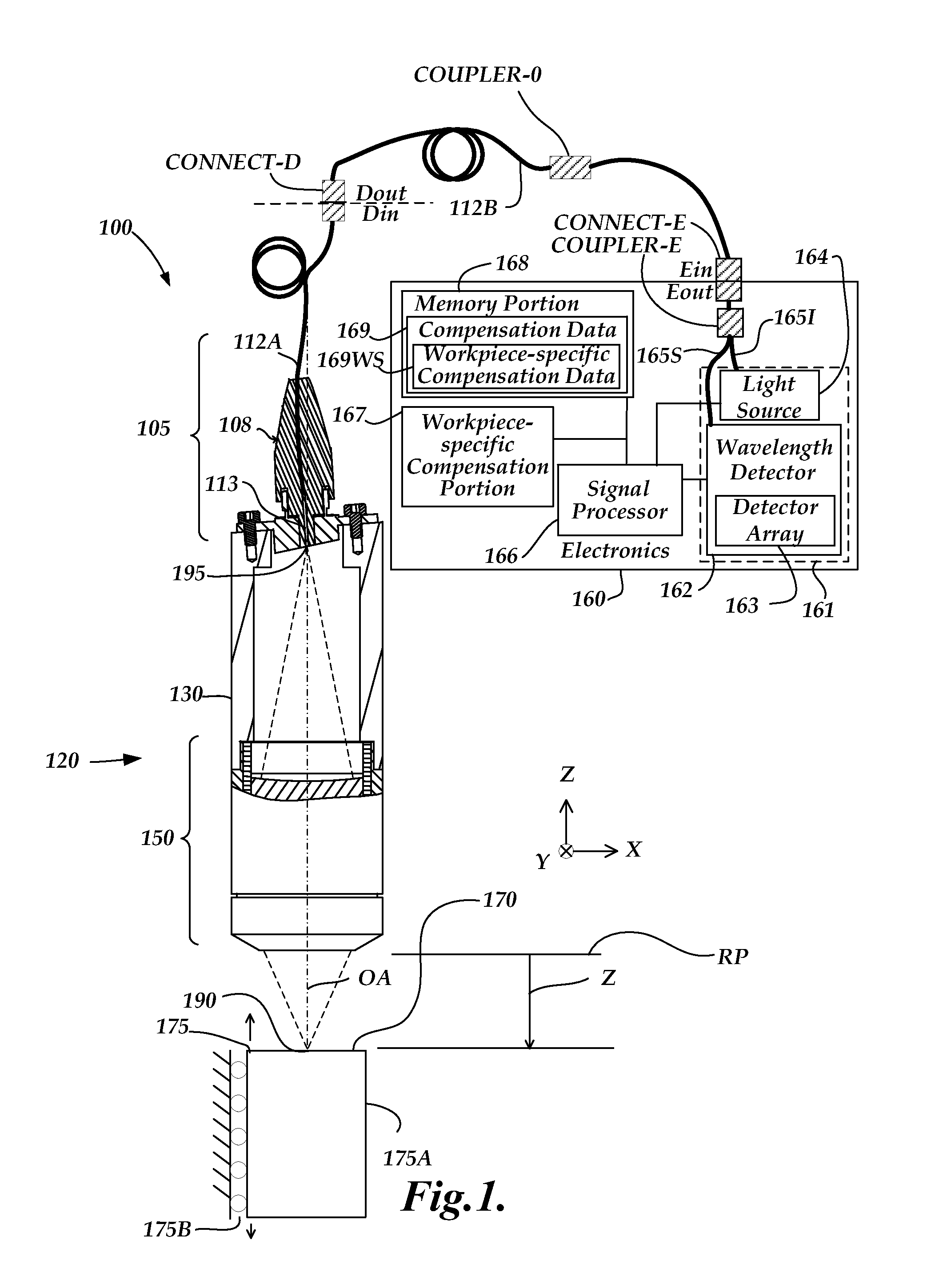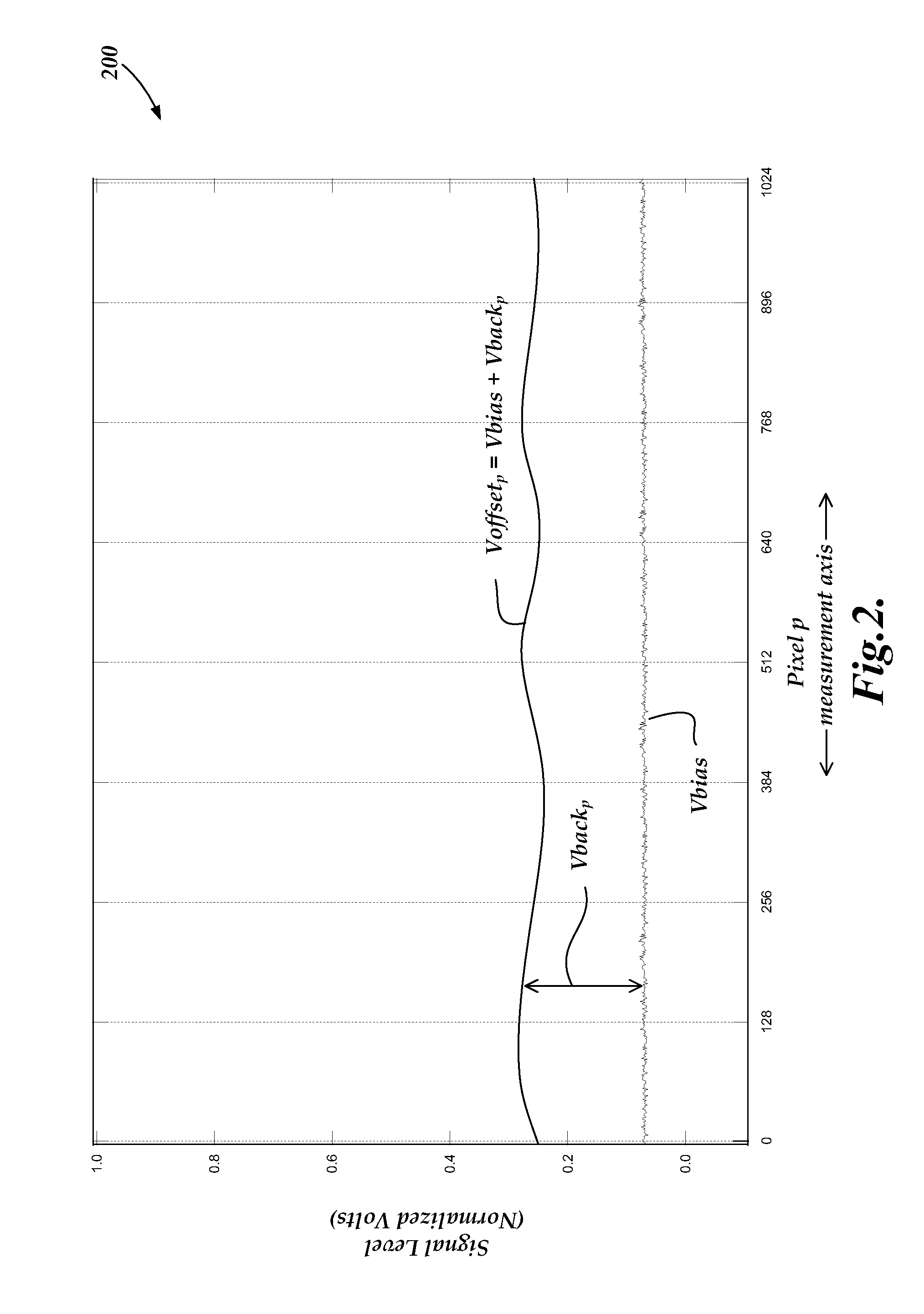Chromatic point sensor compensation including workpiece material effects
a technology of chromatic point sensor and workpiece material, applied in the field of precision measurement instruments, can solve problems such as special calibration or compensation, and achieve the effects of reducing distance measurement errors, improving accuracy and robustness, and facilitating us
- Summary
- Abstract
- Description
- Claims
- Application Information
AI Technical Summary
Benefits of technology
Problems solved by technology
Method used
Image
Examples
Embodiment Construction
[0034]FIG. 1 is a block diagram of one exemplary embodiment of a chromatic point sensor (CPS) system 100. As shown in FIG. 1, the CPS system 100 includes an optical pen 120 and an electronics portion 160. In the embodiment shown in FIG. 1, the electronics portion 160 includes a signal processor 166, a memory portion 168 and a source+detector subsystem 161 comprising a wavelength detector 162, and a broadband light source 164 (also referred to as a white light source, in some embodiments). In various embodiments, the wavelength detector 162 includes a detector array 163 of a spectrometer. The detector array 163 may comprises a plurality of pixels distributed along a measurement axis of the wavelength detector 162, the plurality of pixels receiving respective wavelengths and providing output spectral profile data. The wavelength detector 162 may also include related signal processing (e.g., provided by the signal processor 166, in some embodiments) that removes or compensates certain ...
PUM
 Login to View More
Login to View More Abstract
Description
Claims
Application Information
 Login to View More
Login to View More - R&D
- Intellectual Property
- Life Sciences
- Materials
- Tech Scout
- Unparalleled Data Quality
- Higher Quality Content
- 60% Fewer Hallucinations
Browse by: Latest US Patents, China's latest patents, Technical Efficacy Thesaurus, Application Domain, Technology Topic, Popular Technical Reports.
© 2025 PatSnap. All rights reserved.Legal|Privacy policy|Modern Slavery Act Transparency Statement|Sitemap|About US| Contact US: help@patsnap.com



